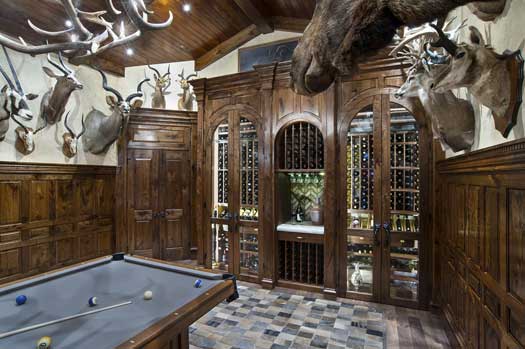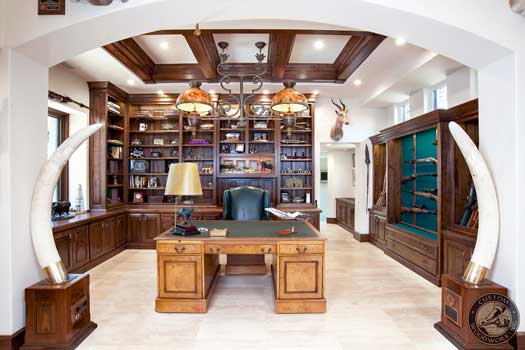Creating Stunning Game Rooms
Can’t-miss Convention seminar gets even better!
Tom Julian of Julian & Sons has amped-up his popular Convention seminar on planning and designing your trophy room by adding input from a trio of experts in their related fields —renowned wildlife artist John Banovich, Brush Country Studio master taxidermist and habitat designer Chris Cammack and noted architect and big game hunter Gustavo Arrendondo. During the seminar, eac h specialist will address all the aspects of planning, designing and building your trophy room.
h specialist will address all the aspects of planning, designing and building your trophy room.
“A trophy room is about the individual, not the animals,” Julian tells me as we discuss the revamped seminar. The four aspects of a great trophy room that the seminar covers are the structural, mechanical, functional and aesthetic qualities.
“[A]rt plays a major factor in balancing a room,” says Julian. “You want to make this space a functional part of your home, where you, your family and friends will want to spend time together enjoying the passion of your outdoor hunting lifestyle.”
As Julian and I discussed the new seminar, he pointed out how much things have changed in taxidermy as taxidermists venture out beyond pre-made forms and into truly custom creations. “What we can do now with taxidermy is a game changer,” he says.
Game rooms are unique structures and the Julians often encounter architects, builders and interior designers who are great at what they do but are unfamiliar with the hunting world and unaware of the particular requirements of game rooms and gun rooms. Early in the design phase, it is easy to correct misconceptions about ceiling heights or window placement and simple to specify interior surfaces that allow flexible arrangement of taxidermy.
Lighting can be arranged to accommodate individual displays and mounts while concrete vaults can be embedded and hidden for collectibles and security. Later in construction, it becomes much costlier and more difficult to revise the design or make substantive changes to the plan, which is why you want someone specifically familiar with hunting and game rooms on your team.
 Julian notes that their most successful projects occur when they are able to participate in a project at the conceptual phase — then see it through to the final finish. “Gustavo, he gets it,” says Julian of the architect/hunter, which is why he is part of the new seminar.
Julian notes that their most successful projects occur when they are able to participate in a project at the conceptual phase — then see it through to the final finish. “Gustavo, he gets it,” says Julian of the architect/hunter, which is why he is part of the new seminar.
Creating a classic game room takes passion, vision and commitment. The most visually stunning and emotionally charged game rooms are created when the individual contributors work toward the client’s overarching goal, not toward their own artistic agenda. Knowing and recognizing the importance of experience and collaboration among the various players is what this seminar gives you.–Scott Mayer

